01 8300 600
Calls charged at national rate.
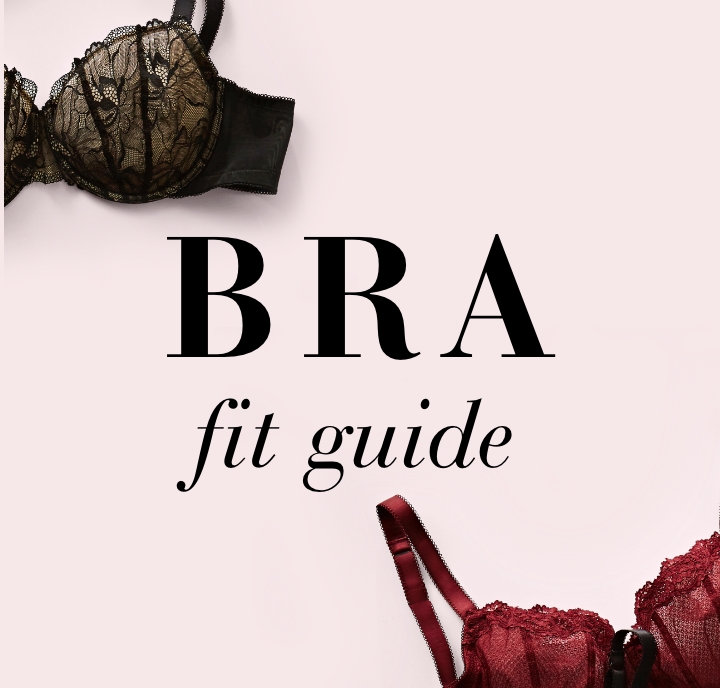
Bra fit guide
We understand the importance of a perfect-fitting bra, so we’ve created this handy guide for you.
Your bra should provide uncompromised comfort and support and we’re here with a step-by-step guide on how to find that perfect fit.
With bras for every outfit and occasion, you can trust us to bring you the best bra for your body shape. Follow the simple steps below and say ‘hello’ to your new signature bra style.
Shop brasFor the perfect fit
Get the perfect fit from the back
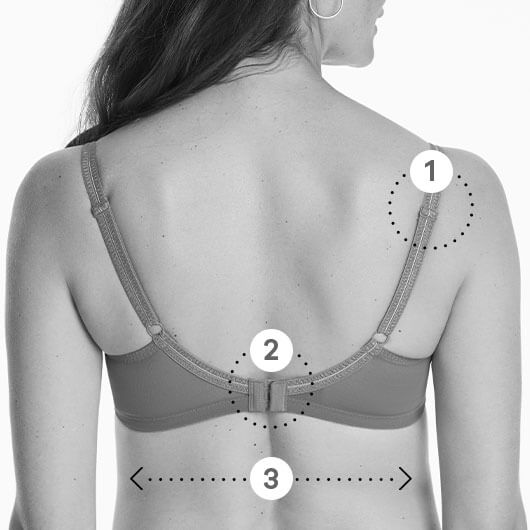
-
The length of your straps should be adjusted enough to support the cup, but should also feel comfortable.
-
Your underband should be nice and snug when fastened on the loosest hook. You shouldn't be able to pull it more than two inches away from your back.
-
The underband should sit horizontally level across your body, in line with the wires at the front.
Get the perfect fit from the front
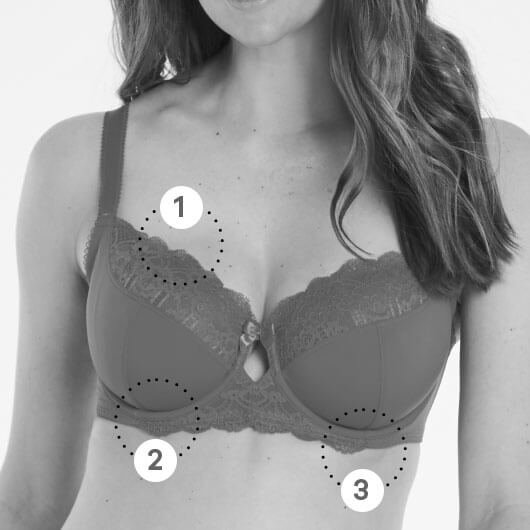
-
There should be no bulging or gaping at the top of the cups.
-
The wire should completely enclose each breast, sit right in the crease underneath your breasts, and finish under your arms.
-
The wire should sit flat against your ribcage, from the middle of your chest and along the crease of your bust, with absolutely no lifting away.
Shop by shape
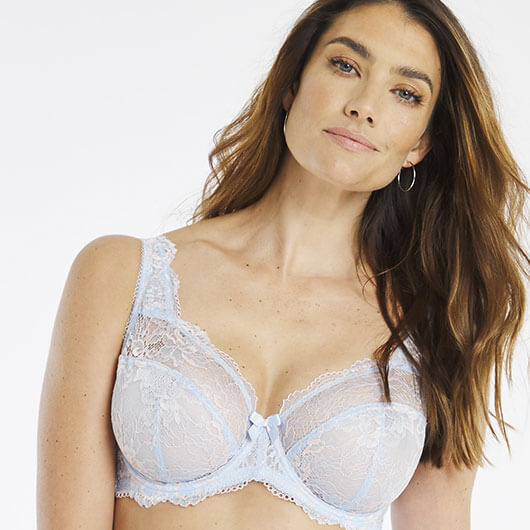
Full cup bra
A full cup bra covers the entire bust to give a great shape and support. A full cup bra is perfect for everyday wear and is often the best bra style for a large bust, offering comfort and support.
Shop now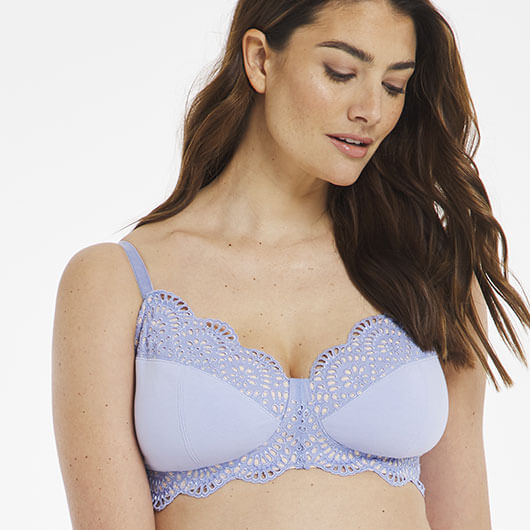
Non-wired bra
Non-wired bras provide support and comfort without the use of underwires. The shape this bra gives your bust is less defined than the shape an underwired bra gives. These bras are useful for lounging, sleeping and when pregnant.
Shop now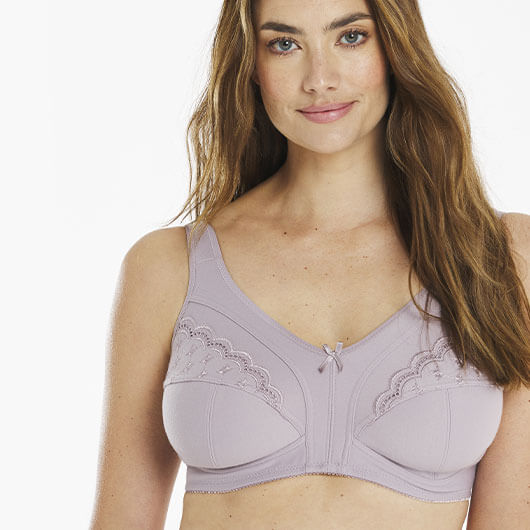
Minimiser bra
A minimiser bra will redistribute the breast tissue giving the appearance of a reduced bust size yet will still be comfortable to wear. They are ideal to wear with fitted tops and button-up shirts if you find the fabric a little stretched or the buttons pull.
Shop now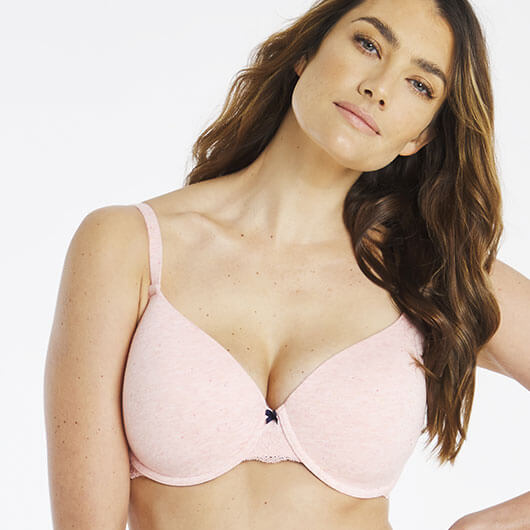
T-shirt bra
T-Shirt bras are also known as smooth or seam-free bras. T-Shirt bras are often padded but they can be unpadded. As one of the best bra styles for a smaller bust, they are designed with a seamless surface for a ridge-free appearance under close-fitting tops.
Shop now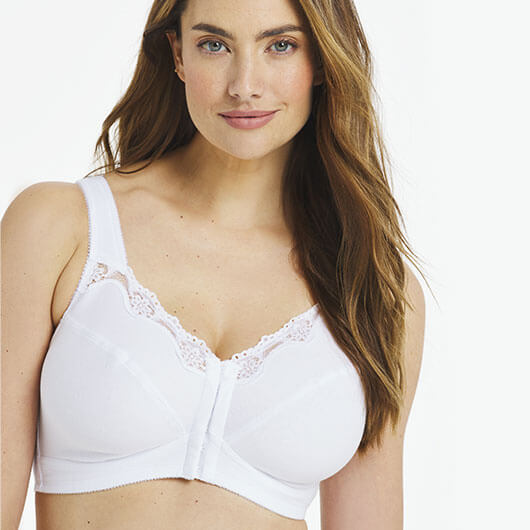
Front fastening bra
Front fastening bras are a great option for creating a smooth back, especially if you’re wearing tight-fitting clothing. They’re also great for low-cut necklines. If you struggle with back fasteners or have restrictive movement, front fastening bras are the ideal solution.
Shop now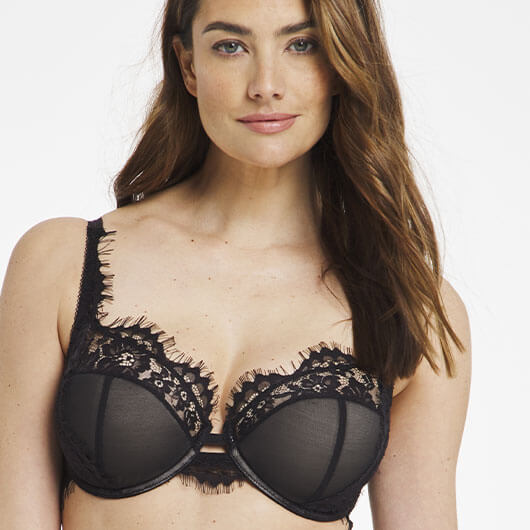
Balcony bra
Balcony bras give a lower coverage than full cup bras and can add shape and uplift to the bust line. This style enables you to wear a lower cut neckline and traditionally has wider set straps giving a wide square neckline.
Shop now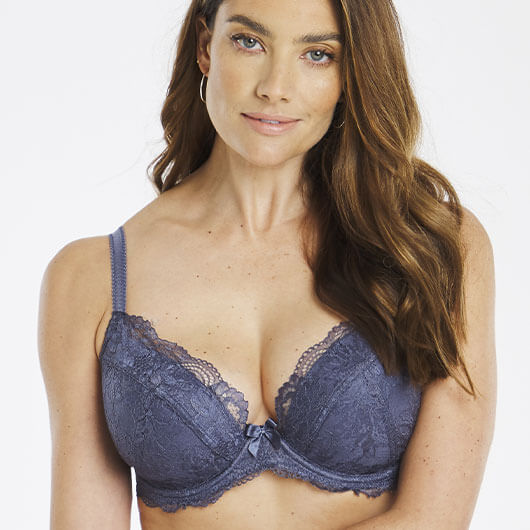
Plunge bra
Whether padded or unpadded, the low coverage of a plunge bra allows you to expose a sexy cleavage. The low centre-front on a plunge bra makes it perfect to wear with low cut tops and dresses.
Shop now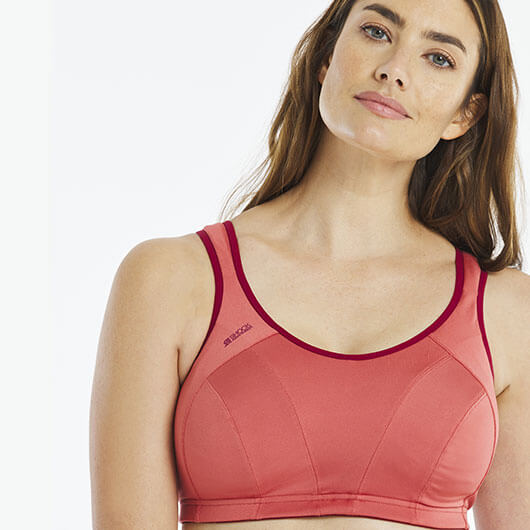
Sports bra
Sports bras are designed to reduce breast movement during exercise. Wearing a sports bra also protects the ligaments that support the breast tissue. It is very important to wear the correct size to get the benefits and proper support a sports bra is designed to give.
Shop now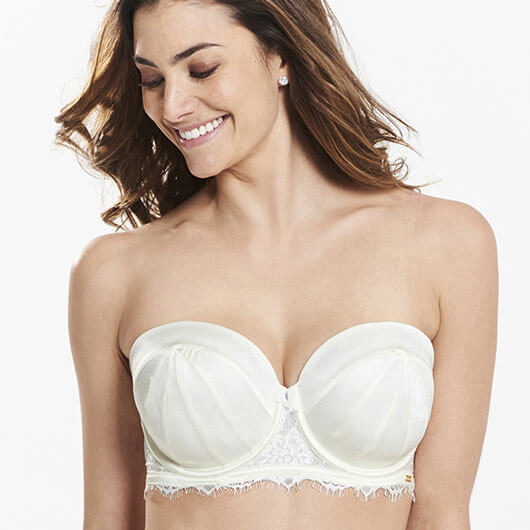
Multiway bra
Depending on the bra, they can be adapted to be a halterneck, racer back or one-strap bra. A multiway bra is a useful addition to any woman’s underwear drawer. If you’ve got the support you need, a multiway bra may also be worn strapless.
Shop nowCommon fit problems
We understand the importance of a perfect-fitting bra, so we’ve created this handy guide for you.
Your bra should provide uncompromised comfort and support and we’re here with a step-by-step guide on how to find that perfect fit.
With bras for every outfit and occasion, you can trust us to bring you the best bra for your body shape. Follow the simple steps below and say ‘hello’ to your new signature bra style.
Is the underband not sitting right?
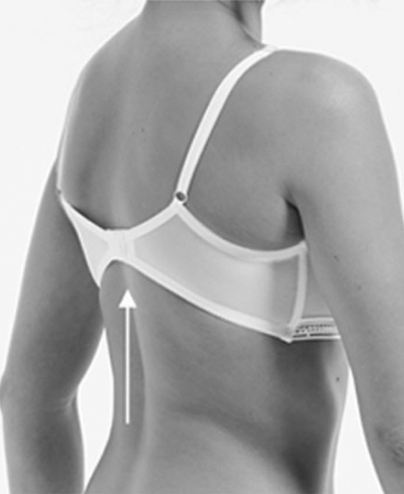
Problem: A well-fitting underband will sit in a straight, horizontal line across your body. If you find that the underband is riding up at the back, the bra is too big.
Solution: To check whether or not your underband fits, lift your arms into the air and check to see if your breasts spill out under the cups. Then fasten it on the loosest hook and eye and pull it out from the centre back. If you are wearing the right size underband, it shouldn’t pull out more than 4cms. If you are able to pull the underband out more than this, you probably need to go down one or two back sizes.
Is the front band pulling down?
Problem: Your bra underband should sit comfortably just beneath your breasts. If it is pulling down at the front underneath your breasts, it may be too small. If you are noticing that your bra is digging in or leaving red marks, then it’s definitely too small.
Solution: Try going up one back size.
Cups not sitting right:
Are your breasts spilling out of the top or sides of the cups?
Problem: If the cups are too small, then your breasts may spill out over the top of the cups or at the sides.
Solution: A perfectly-fitting bra should have no overspill at the cups or underarm. Try going up one or two sizes.
Are the cups loose or baggy?
Problem: If the cups are too big, then the cups will be wrinkled or creased. Or, if it’s a moulded style, they will gape open at the top of the cup.
Solution: Try going down a cup size.
Is the centre front lifting away from your body?
Problem: The centre front should lie flat against the body. If it doesn’t, then this could be a sign that the cups are too small for your bust, causing the breasts to push the centre front away.
Solution: Try going up a cup size.
Straps not fitting right:
Straps digging into shoulders?
Problem: If your bra straps are digging in, it may be because your underband is too big and the straps are having to provide most of the support.
Solution: Try going down a back size – the underband, not the straps, should provide 80% of the support. When you’re comfortable that your underband fits perfectly, you should adjust the straps so they sit snugly on - but don’t dig into - your shoulders.
Straps slipping?
Problem: If your bra straps keep slipping off your shoulders, this may be a sign of general wear as bra straps tend to become slacker over time.
Solution: Try adjusting the bra straps so that they fit tighter. Also, if you have narrow shoulders it’s a good idea to avoid balcony styles with wide set straps.
Other common problems
My breasts are different sizes
Problem: My breasts are different sizes, which one should I fit to?
Solution: Having breasts that are different sizes is perfectly normal, but sometimes, the difference is more noticeable. For maximum comfort and support, we recommend fitting your bra to your larger breast. If you notice any creasing to the smaller cup, you can always try adding a foam or gel insert to pad it out a little.
Underwiring is digging in
Problem: The underwire of my bra is digging into my breast tissue. How can I stop this from happening?
Solution: Your breasts should be completely encased within the underwiring, meaning the wire section of your bra should not be pressing onto your bust. If it is, you probably need to go up a cup size. It’s also possible that the underband is too tight, which may be causing the underwire to dig in. If this is the case, try slackening the clasp.
Bra Fit Video
5 frequently asked questions
I have found a style I like but my specific size is out of stock
It may be worth going down a band size and up a cup size. Alternatively, you could go up a band size and down a cup size. For example, if your bra size is 34E, try a 32F or a 36DD. This is known as ‘sister sizing.’ The cup volume is the same for all three sizes.
Which hook and eye should I wear my bra on?
If your bra is new, you should wear it on the loosest hook and eye. Bras stretch over time and you can accommodate this extra room by fastening your bra on a tighter hook.
How do I avoid back bulge?
Try sitting the back band an inch lower than the front. It will sit on the smaller part of your body and reduce the ‘bulge’ effect. It’s also worth noting that wider side wings are more form-flattering under fitted tops as they create less of a bulge.
Why don’t you recommend using a tape measure?
The tape measure system was developed a very long time ago – over 80 years ago, in fact! Our understanding of body shapes has changed a lot since then, and since this method was only ever intended for cup sizes A-D, it’s ineffective for those with a bigger bust. What’s more, for this method to ‘work’, you have to be wearing a bra when getting measured – but wearing the wrong size bra to begin with will forfeit the accuracy of your measurement. It also doesn’t account for the shape of the ribcage, which varies between women and can impact sizing.
For an accurate bra fit, use our simple visual guide using your current bra, a mirror and your own judgement. It’s easy to do and all in the comfort of your own home.
What’s the most common error in choosing a bra size?
Wearing a back band that is too big is one of the most common mistakes when it comes to bra sizing. Many women confuse the back measurement with breast size, assuming a 36 or 38 back must mean a bigger bust. This misconception not only makes for poor support, bulging necklines and lumps under fitted tops, but also causes skin irritation and bad posture.
It’s worth considering your dress size, as this can be a helpful guide. If for example, you are a size 10 or 12, it’s unlikely you’ll need a 36 bra. In any case, the best solution is to follow our simple guide. You may be surprised to find that you go down two back sizes and up two cup sizes, but this isn’t unusual.
